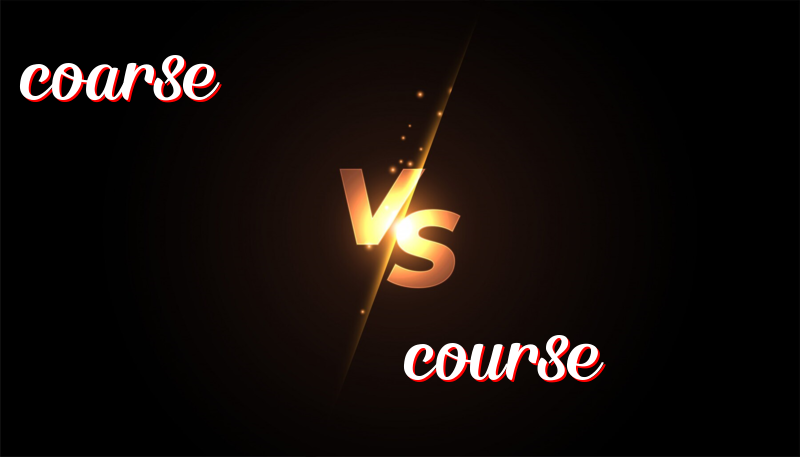Understanding the Distinctions: Coarse vs. Course
Coarse vs. Course: What’s the Difference?
Some words in English sound the same but mean different things. These words are called homophones. Two such words are “coarse” and “course.”
Coarse
History: The word “coarse” comes from the Old French word “cours,” meaning rough.
What it means: “Coarse” is an adjective that means rough, not smooth, or not fine.
Examples:
- The sandpaper feels coarse to the touch.
- She wore a sweater made of coarse wool.
- The coarse fabric was not comfortable to wear.
- The coarse sea salt adds flavor to the dish.
- The path was filled with coarse gravel.
Course
History: The word “course” comes from the Latin word “cursus,” meaning running or way.
What it means: “Course” can be a noun or a verb. It can mean a class, a path, a part of a meal, or the direction something moves.
Examples:
- I am taking a course in art history.
- The river follows a winding course.
- Our main course tonight is pasta.
- During the course of the year, the weather changes.
- He set a new course for the ship.
Trick to Remember the Difference
Think of the letters:
- “Coarse” has an “a” like “sand,” which is rough.
- “Course” has a “u” like “university,” where you take classes or courses.
Summary
“Coarse” describes something rough or not fine. “Course” can mean a class, direction, or part of a meal. Remembering the differences can help you use these words correctly in your writing. So, next time you talk about something rough, use “coarse.” If you talk about a lesson or path, use “course.”

Leave a Reply
You must be logged in to post a comment.